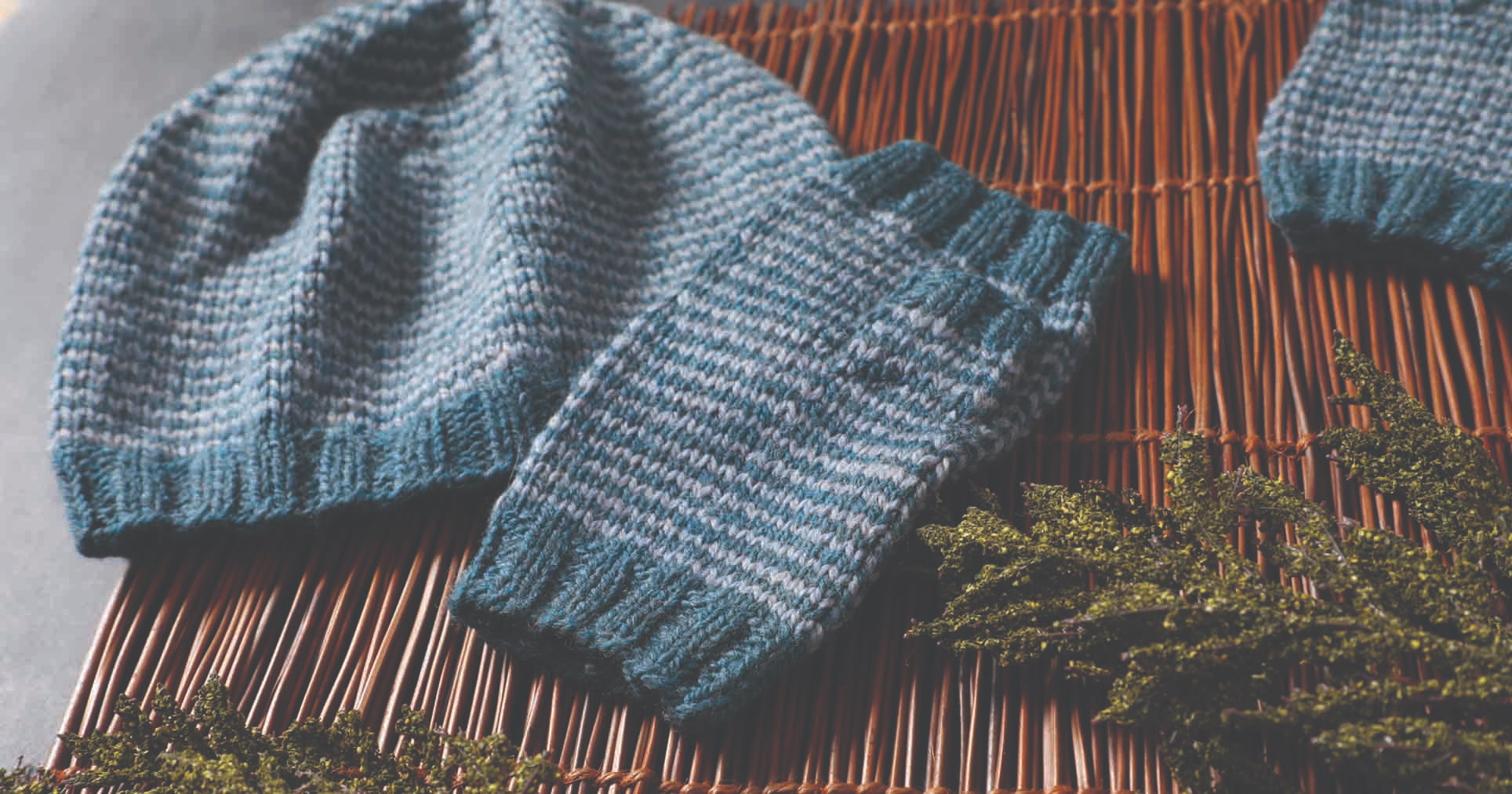Jogless Stripes in Helical Knitting

When we knit in the round, we are actually knitting a continuous spiral. The beginning and end of the round don’t quite line up, which is why jogs form when we knit patterns with features such as stripes.

But by stacking two or more spirals on top of one another, we can create jogless single-row stripes and avoid carrying the alternating yarns up the inside of the knitting. This is known as helical knitting.
There are two methods of knitting helical stripes, one where the stitches remain stationary and the beginning of each color is staggered, and one where the color change moves around the needles.
Method 1: Stitches Remain Stationary
This method is often demonstrated on double-pointed needles but can also be used on a circular needle using the standard method or the magic loop method.
Divide the total stitches by the number of colors desired. For example, for two-color stripes, divide the stitches in half.
Begin by working half the stitches in Color A (dark blue in the photos). Join Color B (gray) and work past the beginning of the round and pick up Color A again when you come to it on the needle. Take care not to cross it under the previous color. This method may create slightly uneven stitches at the color change, but you can avoid this by snugging the stitches gently when picking up the new color, taking care not to pull them too tight.

Method 2: Slipping Stitches
For this method, join Color B (gray) at the beginning of the second round, then knit until 2 or 3 stitches before the end of the round, leaving the final stitches of the first color unworked. Slip these stitches to the right needle, and the yarn is now in place to knit the next round with Color A (dark blue). Repeat this process on every subsequent round. In this way, no job occurs because the colors never quite “catch up” to one another. This method may help to eliminate the distortion that can happen when the color change occurs in the same place every round. The disadvantage is that it can be tricky to work decreases simultaneously with the color change, as you may need to work a decrease at the color change.

Both of these methods for knitting jogless stripes can be used in a variety of situations. Try them out and see which works better for your project.
Kerry Bullock-Ozkan’s mother taught her to knit at about age eight, and she has the abandoned, half-knit doll sweater to prove it! She didn’t really catch the knitting bug until her mid-twenties. She lives with her husband and son in North Carolina. Visit her website to learn about her adventures in knitting, spinning, and natural dyeing.
Kerry designed the hat featured above as part of her Icy Stripes Hat & Mitts set featured in Interweave Knits Gifts 2020.
Originally published September 16, 2020. Updated February 3, 2022.














Join the Conversation!